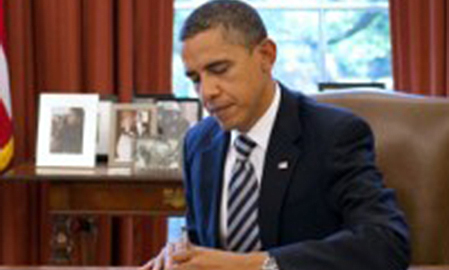The surge in sign-ups for health insurance under the Affordable Care Act may bode well for the drug industry. But well before Monday’s enrollment deadline, the ACA had spurred double-digit increases in demand for pharmaceuticals, new data suggest.
The research shows prescription claims for Medicaid patients increased in January by 10% and in February by 14% over the same periods last year.
The study, by market research firm Symphony Health Solutions, also uncovered that average out-of-pocket cost for contraceptives has dropped more than 58% since 2012.
“Even with Medicaid expansion less than three months old, we’re starting to see notable increases in Medicaid prescription claims,” said Don Otterbein, SVP marketing and product management, Symphony Health Solutions. “We expect this trend to continue and—mostly likely—to increase as newly enrolled Medicaid patients seek healthcare services.”
Enrollment in private insurance under the ACA has just reached 7.1 million, the Obama administration said, although that total did not include Medicaid enrollment. With key states balking at the Medicaid expansion last fall, and the exchanges off to a rocky start, ACA’s problems had created questions around the extent to which pharma would benefit from healthcare reform.
Symphony said the Medicaid data are a combination of third-party Medicaid and state-run Medicaid data from its managed care research product, which utilizes claims data from more than 42,000 unique retail pharmacies.
For the contraceptive research, it looked at commercial payers, female patients and the drug class for contraceptive agents using a database that leverages what it calls the industry’s largest sample of retail sales data refreshed monthly.
Out-of-pocket costs for contraceptives began to decline for this class of medication immediately after implementation of the ACA birth control mandate in August 2012, Symphony said. Costs fell from a high of $17.54 in July 2012 to $7.36 in February 2014.
“These reductions in patient costs accelerated when plans launched their annual benefit designs in January 2013,” added Otterbein. “This trend is expected to continue this year, although it is starting to slow.”
UPDATE: On Friday, April 4, the Wall Street Journal reported, the Centers for Medicare and Medicaid Services said that about 61 million people were on Medicaid as of the end of February, vs. 58 million Americans who were on Medicaid from a period of July to September 2013. That’s a difference of three million additional enrollees in Medicaid than were in the program before the start of the health law’s open enrollment period Oct. 1, WSJ noted.
Asked to provide a breakdown of the Medicaid prescribing total by brand vs. generic drugs, Symphony told MM&M that in January 21.9% were for brands and 78.1% for generics, while in February generic Rx expanded slightly to 78.9% of total Medicaid Rx claims.








